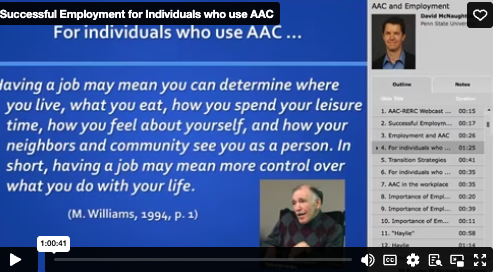Successful employment for individuals who use AAC
Dr. David McNaughton and Anthony Arnold describe strategies to support employment for individuals who use AAC. All strategies are illustrated with “success stories” of people who use AAC and who are employed.
